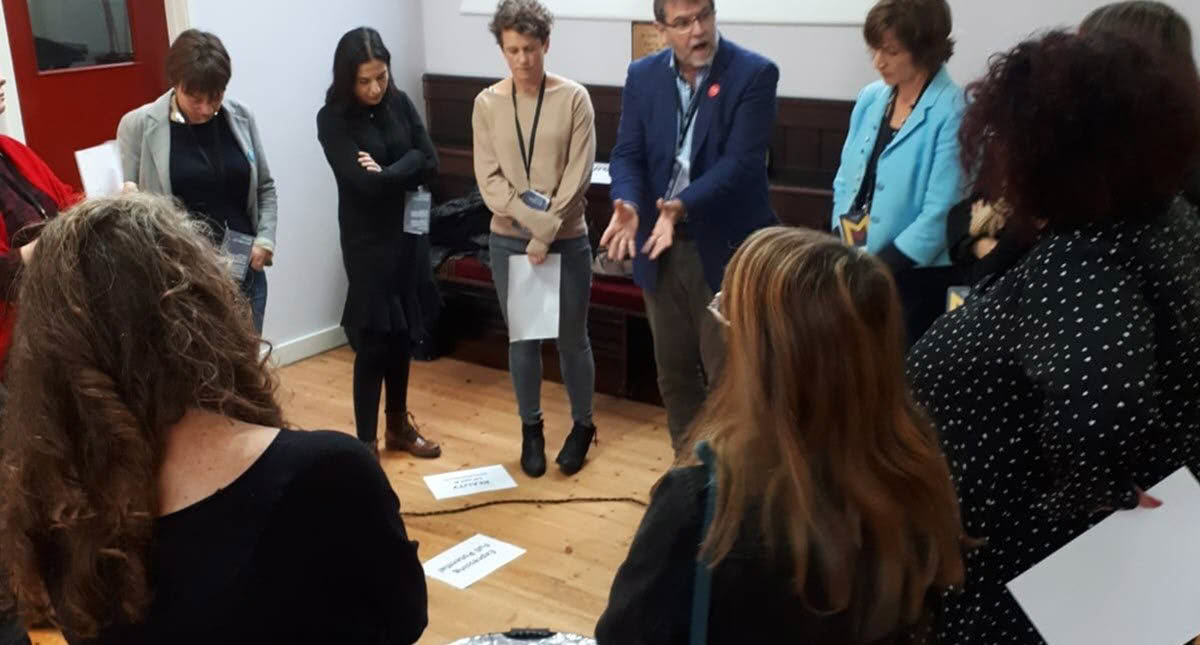

The Map of Meaning® is based on high quality peer-reviewed academic research. The intellectual source of the Map is established through the published research papers.
To honour the integrity of the Map, we ask you to maintain the structure of the Map. If you change any element of the structure of the Map it is no longer research-based. When you work with the Map you will encourage people to choose their own words. This helps them to personalise the Map, so the individuals you work with can bring their own language to the Map but the structure cannot be changed.
Because we want to make the Map of Meaning readily available, we have made the validated questionnaire freely available in the research papers. To reciprocate, we ask that where you see opportunities to further research the Map you consider involving us.
Please cite the source of the Map at all times and only use materials that have the source of the Map clearly cited. Attribution of a source serves as a fact checking tool. If we claim it is research based, we need to cite the source of that research. In citing the source, the credibility of the Map is maintained.
Source:
Lips-Wiersma, M.S. (1999) The influence of ‘spiritual meaning-making’ on career choice, transition and experience. The University of Auckland (New Zealand). PhD Thesis
Lips-Wiersma, M.S. and Morris, L. (2009) Discriminating between ‘meaningful work’and the ‘management of meaning’. Journal of Business Ethics, 88, 491-511.
Lips-Wiersma, M.S. and Wright, S. (2012) Measuring the meaning of meaningful work: Development and validation of the Comprehensive Meaningful Work Scale (CMWS). Group & Organization management, 37(5), 655-685.
There are things to understand about the language used in presenting and using the Map of Meaning:
The original participants of the research came from very diverse ethnic, occupational, spiritual and religious backgrounds. Conscious (yet always incomplete) attempts were made to include their worldviews, because worldviews are an important part of a person’s identity and identity is an important influence on how we give and perceive meaning.
When working with the Map we need to be aware that, particularly when we work with the Map as Western people, diverse identities and worldviews are often unintentionally silenced.
We cannot prescribe the meaning and impact of these important parts of people’s identity. But we can avoid silencing them by regularly inviting these into the room: e.g. “how would you work with this in your culture?”, “What words would you use in your religion?”, “What feels comfortable for you as a young person, woman etc”?
Meaning is not contained to one source, such as work, family or community. In fact, research shows life is more meaningful if we tap into a number of sources of meaning (Lips-Wiersma and Morris, 2009). And, paid work should not be seen as more heroic than anything else.
In addition, solutions to finding more meaning in work lie in the private sphere and vice versa. For you, as a practitioner this principle means you need to be flexible in your approach and learn to listen for meaning coming and going in different spheres of life. At the same time, these are limited to the six dimensions.
The data on which the Map is based is gained from ordinary human beings like you and me. This means working with the Map is a meeting of equals. Please stay present to this fact in your work with the Map.
All human beings have in common that, at a deeper level, they can sense what is meaningful and what is meaningless. Your role is to help them to surface that knowledge, NOT to tell them what is meaningful for them.
Meaning is not just the domain of professionals. There is also no evidence that coaches or managers or leaders know more about working and living meaningfully than anybody else in the organisation.
When the Map is used well, it is a humbling process. One is constantly met by the depth of insight people from all walks of life have into the purpose of their existence. They know what gives it meaning, and where and when meaning is lost.
We ask you to honour the intrinsic dignity of each human being with whom you work by inviting people to stand in their own strength.
The Map of Meaning® is not a technique or tool to impose on others without using it on ourselves. The Map can only be used effectively if we have experienced it ourselves, and this is a lifelong practice. Working with the Map with others is effective to the extent that you understand how meaning works in your own life. Therefore, applying the Map to yourself on a regular basis is fundamental to sharing the Map effectively with others.
Generosity has been integral to those participating in the research for the Map of Meaning, to getting it into the world, and to our understanding of how the Map works. We ask you to honour this principle in your work with others and in your relationship with the Trust.
We are a community of continuous learning, and as practitioners creatively apply this learning, we find new applications for the Map, new processes to use with the Map and new ways of introducing the Map to different audiences. Our trainings are a product of continuous learning and our hope is that you contribute to this ongoing learning by generously sharing your insights and practices. This way we can be increasingly effective in aiding humanity to live and work meaningfully and make our work with the Map practical and accessible to all.